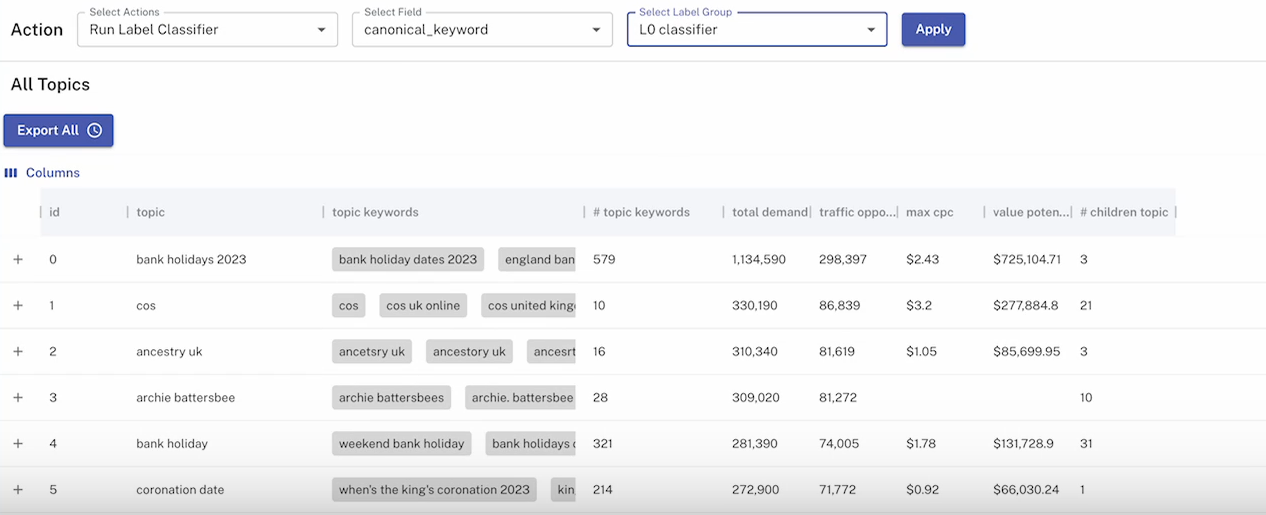
August 18, 2023
Structuring New Topics Using Existing Site Categories and Information Architecture
How to Classify Topics for New Pages on Your Website
When planning your website’s content, it’s essential to categorize your topics based on existing site categories. Proper classification ensures that you understand the language and groupings that resonate with your audience. This approach can drive your SEO strategy, influence your site’s taxonomy, and shape the creation of new pages. In this guide, we’ll walk you through a step-by-step process to make this happen with Similar.ai.
Check out the video guide from Robin Allenson – CEO and Co-Founder at Similar AI 💙
First, let’s break down a few terminologies used here:
- Label groups: are groups of categories. Think of these as folders on your computer. Just like you might group related files into a single folder, label groups bundle similar categories together on a website. They can be hierarchical or flat. They can also hint at new categories you might want to add in the future.
- Taxonomy: refers to a website’s structure, especially its URL configuration. Take, for instance, a URL that concludes with “/blog/”. This usually represents a blog section on a website. These URL patterns give search engine bots insights into the interrelation and structure of various pages.
1. Understand Your Current Site Structure
Use the site below as an example:
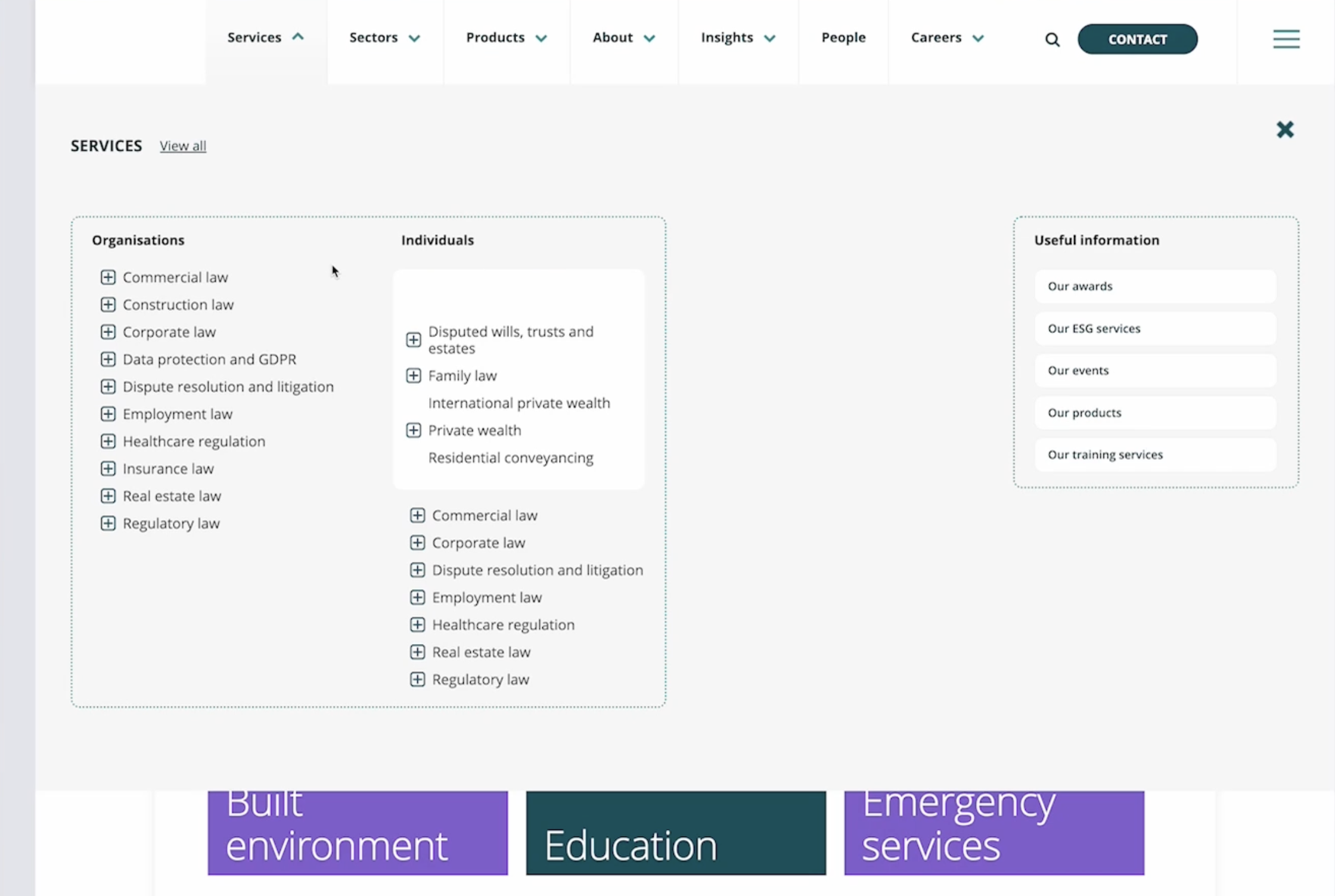
- This site has primary categories, often referred to as L1 categories. For instance, these might be “Organisations” and “Individuals”. The secondary categories, or L2s, could be specific topics like “Commercial Law” or “Employment Law”.
- At times, you may notice content overlaps between these categories.
- Now your task is to consider how label groups could be structured for this kind of information architecture.
Tip: While Similar AI supports uploading JSON or CSV files to generate label groups, not every site owner has convenient access to these files, especially if your site has numerous categories. In such cases, manually inputting label groups into Similar AI becomes the go-to method.
2. Explore Topics under Workbench view
Once you’ve got a handle on your site’s existing structure:
- Start building topics by drawing ranking keywords into Similar AI. This could be from Search Engine Results Page (SERP) data or competitive keyword analysis. Learn how to do it here:
- Go to the Topics view where these keywords are sorted into topics.
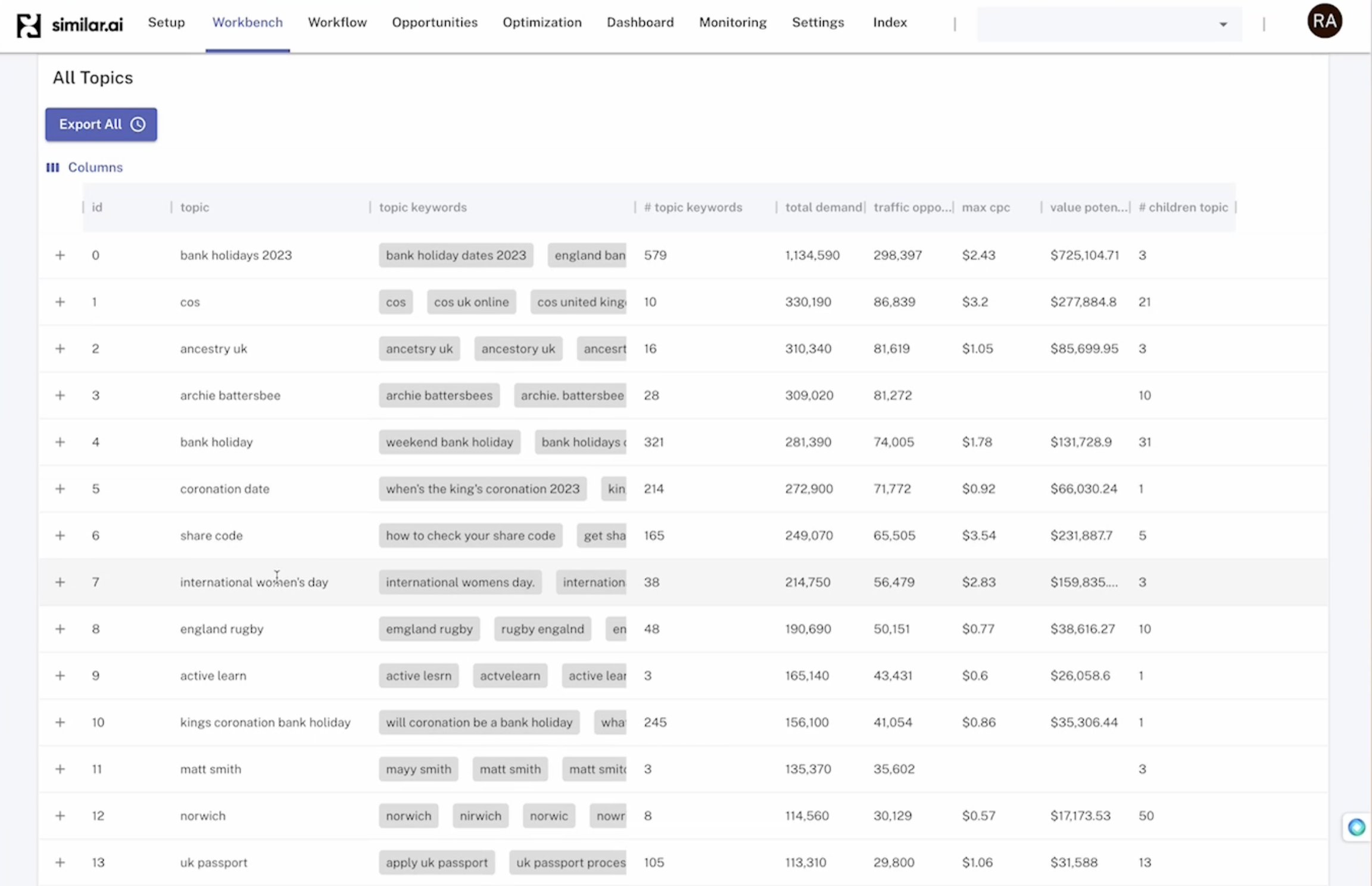
- Review these topics to determine their relevance.
- For better topic classification, consider introducing high-level, overarching categories or label groups to classify whether topics are relevant to a site at all. We sometimes refer to these as L0 or relevance classifiers. You can use the label groups feature on Similar AI to simplify this process.
3. Switch to the Index view
- Navigate to the
Setupsection. - Proceed to
Taxonomyand thenAdd new Label Groups. - Fill in the label name.
- Within the label groups you’ve recently created, you can add multiple sub-label groups by clicking on the plus icon on the right.


- Remember to provide detailed descriptions for clarity. These will also help the AI understand exactly what you mean if you ask it to classify topics.
4. Refine Your Topics
- Switch back to
Workbenchview and go toTopics - Select
Run label classifieras the Action and click onSelect Label Group, choose the one you just created. In this case, it is the L0 classifier.
- This step will showcase which topics correspond to which categories, whether they pertain to individuals or corporations.
- In this example, we already have two other label groups we created before which are “Legal work” and Individuals”. So you can first use them to only display topics under “L1 = Legal work” and “L2 = Legal work specifically for individuals.” Then you can run the action and classify those further into different L2s under the Individuals label group.
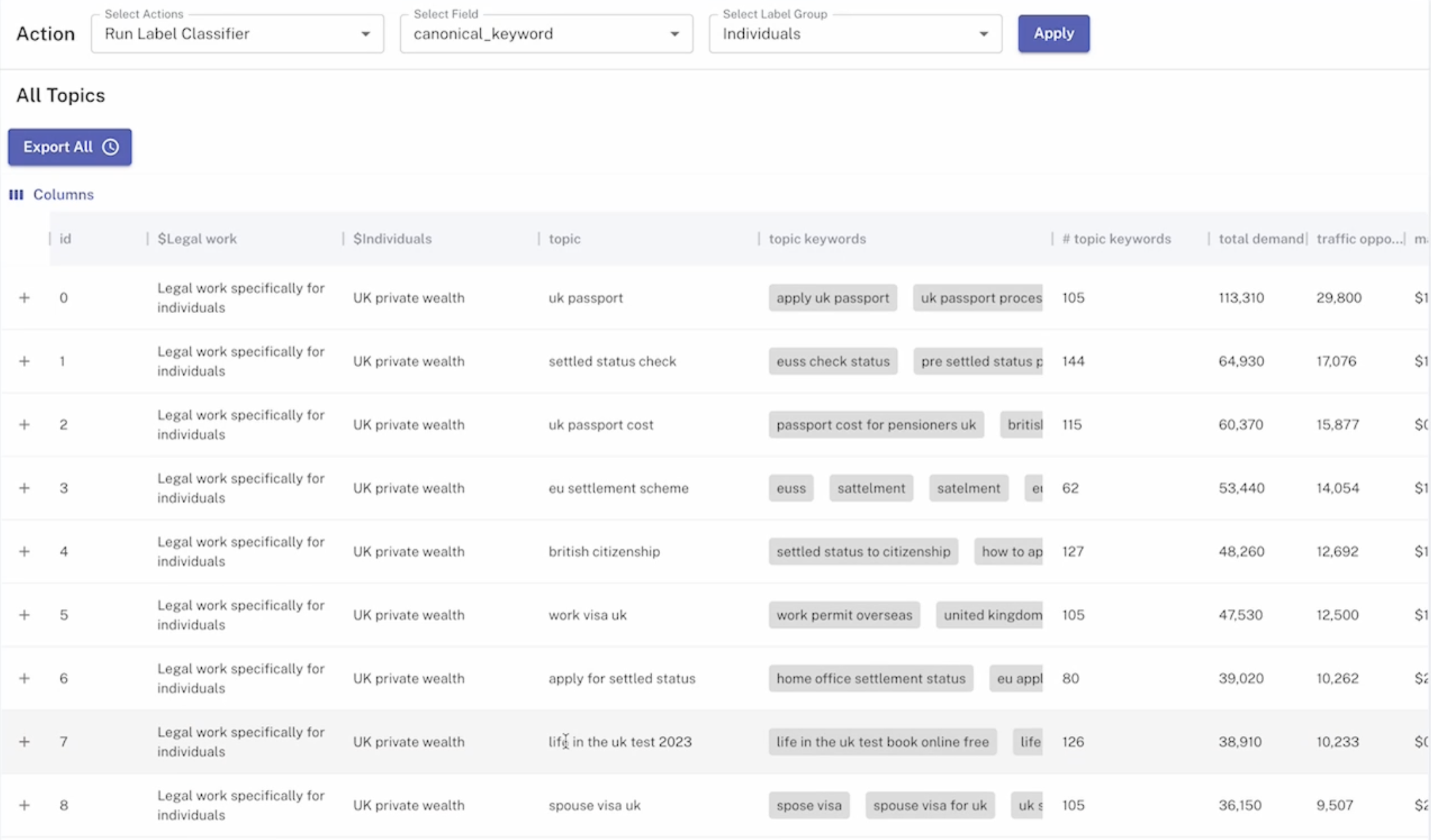
- You save this action as a recipe for later use by selecting
Save asand using it as a rule for later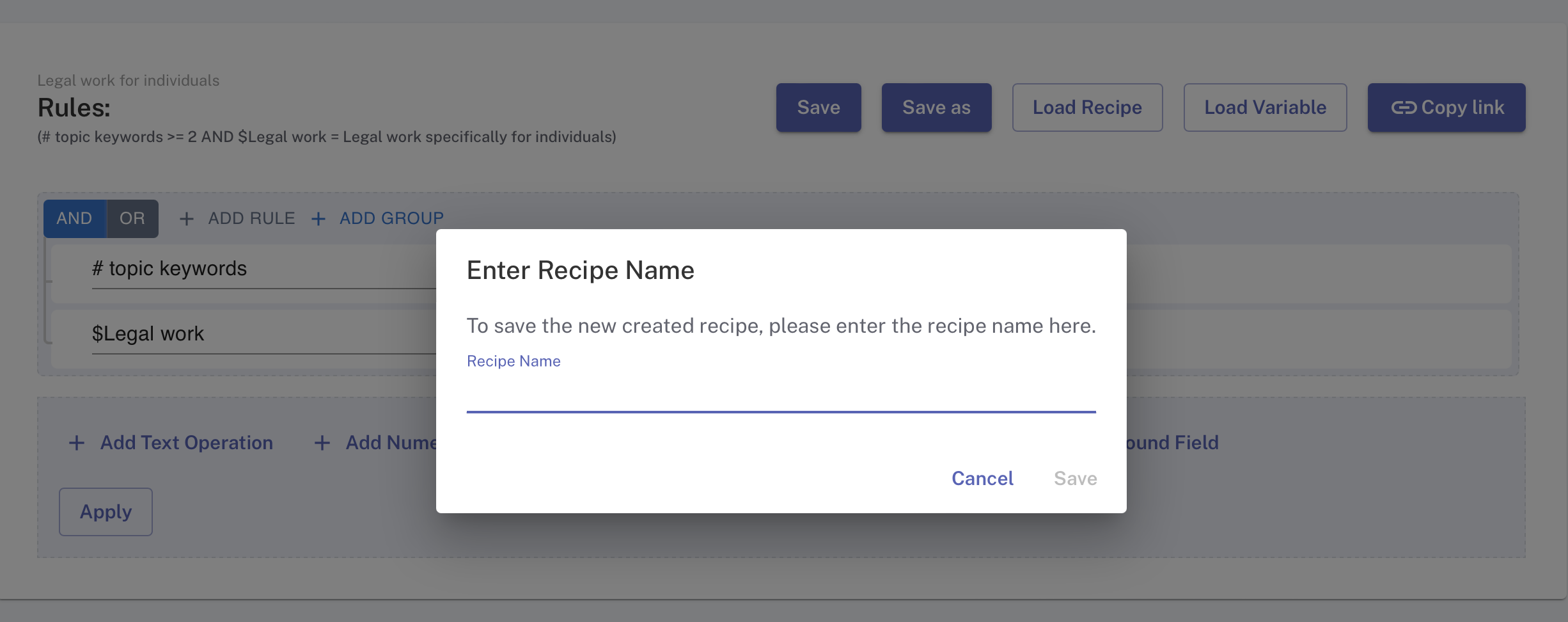
- Following this classification, you’ll notice which topics align with the L1 categories present within your website’s structure.
- If you identify any misclassified topics, loop back to refine them for better accuracy.
We hope this guide aids you in classifying topics seamlessly and efficiently. Implementing these steps can significantly enhance your site’s organic rankings and the overall coherence of your website’s content.
If you have any other questions, please don’t hesitate to reach out! Our team of experts is here to answer any questions and provide the guidance you need to achieve SEO success.
